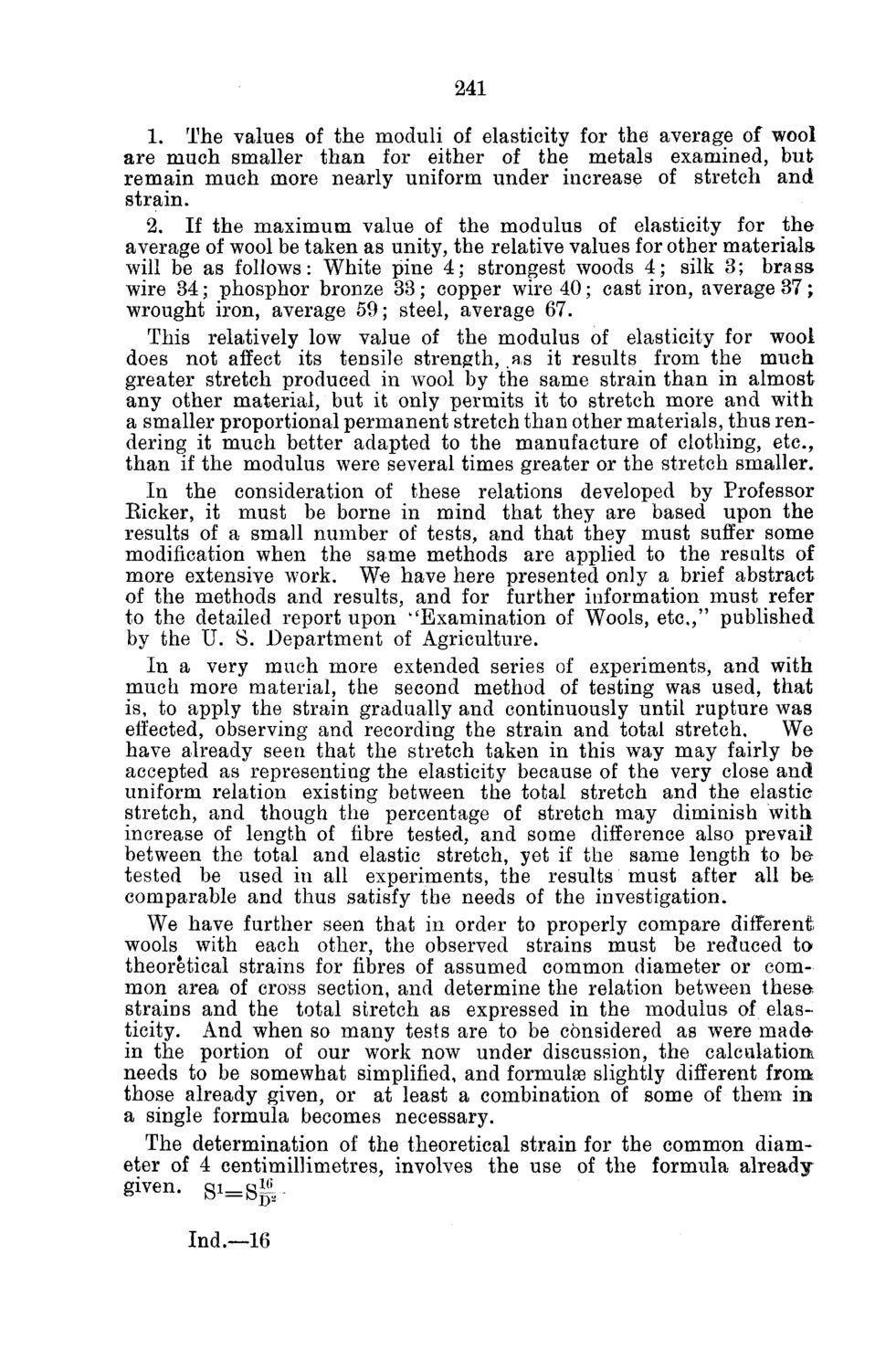| |
| |
Caption: Board of Trustees Minutes - 1886
This is a reduced-resolution page image for fast online browsing.

EXTRACTED TEXT FROM PAGE:
241 1. The values of the moduli of elasticity for the average of wool are much smaller than for either of the metals examined, but remain much more nearly uniform under increase of stretch and strain. 2. If the maximum value of the modulus of elasticity for the average of wool be taken as unity, the relative values for other materials will be as follows: White pine 4 ; strongest woods 4 ; silk 3; brass wire 34; phosphor bronze 33; copper wire 40; cast iron, average 37; wrought iron, average 59; steel, average 67. This relatively low value of the modulus of elasticity for wool does not affect its tensile strength, .as it results from the much greater stretch produced in wool by the same strain than in almost any other material, but it only permits it to stretch more and with a smaller proportional permanent stretch than other materials, thus rendering it much better adapted to the manufacture of clothing, etc., than if the modulus were several times greater or the stretch smaller. In the consideration of these relations developed by Professor Eicker, it must be borne in mind that they are based upon the results of a small number of tests, and that they must suffer some modification when the same methods are applied to the results of more extensive work. We have here presented only a brief abstract of the methods and results, and for further information must refer to the detailed report upon k'Examination of Wools, e t c , " published by the U. 8. Department of Agriculture. In a very much more extended series of experiments, and with much more material, the second method of testing was used, that is, to apply the strain gradually and continuously until rupture was effected, observing and recording the strain and total stretch. We have already seen that the stretch taken in this way may fairly be accepted as representing the elasticity because of the very close and uniform relation existing between the total stretch and the elastic stretch, and though the percentage of stretch may diminish with increase of length of fibre tested, and some difference also prevail between the total and elastic stretch, yet if the same length to be tested be used in all experiments, the results must after all be comparable and thus satisfy the needs of the investigation. We have further seen that in order to properly compare different wools with each other, the observed strains must be reduced to theoretical strains for fibres of assumed common diameter or common area of cross section, and determine the relation between these strains and the total stretch as expressed in the modulus of elasticity. And when so many tests are to be considered as were made in the portion of our work now under discussion, the calculation! needs to be somewhat simplified, and formulae slightly different from those already given, or at least a combination of some of them in a single formula becomes necessary. The determination of the theoretical strain for the common diameter of 4 centimillimetres, involves the use of the formula already given. s ^ S ^ . Ind.—16
| |